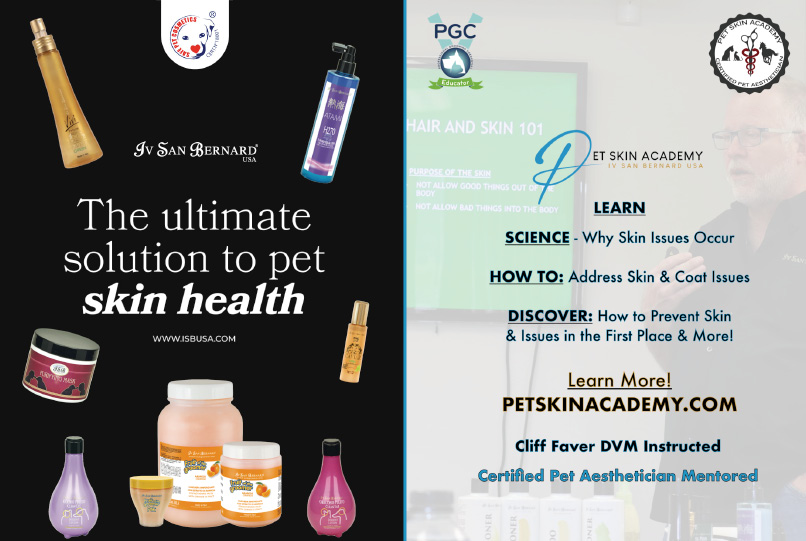


 ntibiotics have long been a game-changer in medicine. They help both humans and pets combat infections, making once-deadly diseases manageable. However, the overuse and misuse of antibiotics have given rise to a critical and growing problem: drug-resistant bacteria, also known as “super bugs.” As a groomer, it’s essential to understand the risks associated with these bacteria and how to protect yourself, your clients and their pets from potential infections.
ntibiotics have long been a game-changer in medicine. They help both humans and pets combat infections, making once-deadly diseases manageable. However, the overuse and misuse of antibiotics have given rise to a critical and growing problem: drug-resistant bacteria, also known as “super bugs.” As a groomer, it’s essential to understand the risks associated with these bacteria and how to protect yourself, your clients and their pets from potential infections.The Evolution of Super Bugs
Many veterinarians have a preferred “go-to” antibiotic that they prescribe frequently. Over time, this repeated exposure encourages bacteria to mutate and develop resistance to that particular class of antibiotics. As resistance builds, doctors are left with fewer effective treatment options, leading to the emergence of these “super bugs.”
As a groomer, you may encounter dogs and cats with MRSP infections without even realizing it. The bacteria look like any other skin infection, making it difficult to identify without a veterinary culture and sensitivity test. These tests are essential for determining which antibiotics, if any, will work against the specific strain of bacteria.
Groomers are at a higher risk of exposure to these bacteria due to their close contact with multiple pets daily. Here are some key points to understand about the risks:
- High-Risk Pets: Pets on long-term antibiotics or with compromised immune systems are more likely to harbor drug-resistant bacteria.
- Frequent Exposure: Groomers who work with pets suffering from chronic skin issues are more likely to come into contact with MRSP.
- Human Risk: Up to 4% of people working with pets, including groomers, may contract MRSP.
- Hidden Threat: Many groomers may have already been exposed to MRSP without knowing it.
- Personal Protective Equipment (PPE): Always wear gloves, eye protection and face masks when handling pets with visible skin infections. Water sprays can aerosolize bacteria, making it easier to inhale them or spread them to surfaces.
- Clean and Disinfect Equipment: Your grooming tools—such as scissors, brushes, clippers and recirculation systems—can become breeding grounds for bacteria if not properly cleaned. Disinfect all equipment between each pet to prevent cross-contamination.
- Schedule Infected Pets Last: If you know a pet has a skin infection, try to schedule them as the last appointment of the day. This minimizes the risk of spreading bacteria to other pets and gives you time to do a thorough cleaning afterward.
- Maintain Clean Workspaces: Cleanliness is critical in preventing the spread of super bugs. Disinfect grooming tables, tubs, cages, towels and any other surfaces that come into contact with pets. A good rule of thumb is to clean after every pet.
- Red, inflamed skin
- Pustules or boils
- Hair loss around the infected area
- Itching and irritation
If you notice a pet with these symptoms, advise the owner to consult their veterinarian for a culture and sensitivity test. Identifying the bacteria early can prevent the spread and ensure appropriate treatment.
Encourage pet owners to prioritize testing, especially if their pet has a recurring skin infection. While the upfront cost may be higher, it can save time, money and frustration in the long run by ensuring the right treatment is used from the start.
“Super Bug” Key Takeaways
- Protect Yourself: Always use PPE when dealing with infected pets to minimize your risk.
- Clean Thoroughly: Disinfect all tools and surfaces after each pet to prevent the spread of bacteria.
- Promote Testing: Encourage pet owners to invest in culture and sensitivity tests to ensure effective treatment.
- Stay Informed: Keep up to date on the latest information about drug-resistant bacteria and best practices for preventing their spread.
The Bigger Picture: Public Health Implications
Super bugs like MRSP are a growing concern in both human and veterinary medicine. As a groomer, understanding the risks and taking appropriate precautions can help protect you and the pets in your care. By implementing proper hygiene practices, promoting responsible antibiotic use and staying informed, you can reduce the risk of spreading drug-resistant bacteria and ensure a safer environment for everyone involved.
Dr. Cliff Faver graduated with a BS in Biology/BA in Chemistry before getting a Veterinary degree in 1987. He is the past owner of Animal Health Services in Cave Creek, Arizona and now the US distributor for Iv San Bernard products, teaches the ISB Pet Aesthetician Certification program, and speaks internationally on hair and skin. His passion is to merge groomers and veterinarians to aid in helping and healing pets. He is also a member of AVMA, AAHA, AZVMA, Board member with Burbank Kennel Club, and has served on Novartis Lead Committee, Hill’s International Global Veterinary Board, and a Veterinary Management Group.


